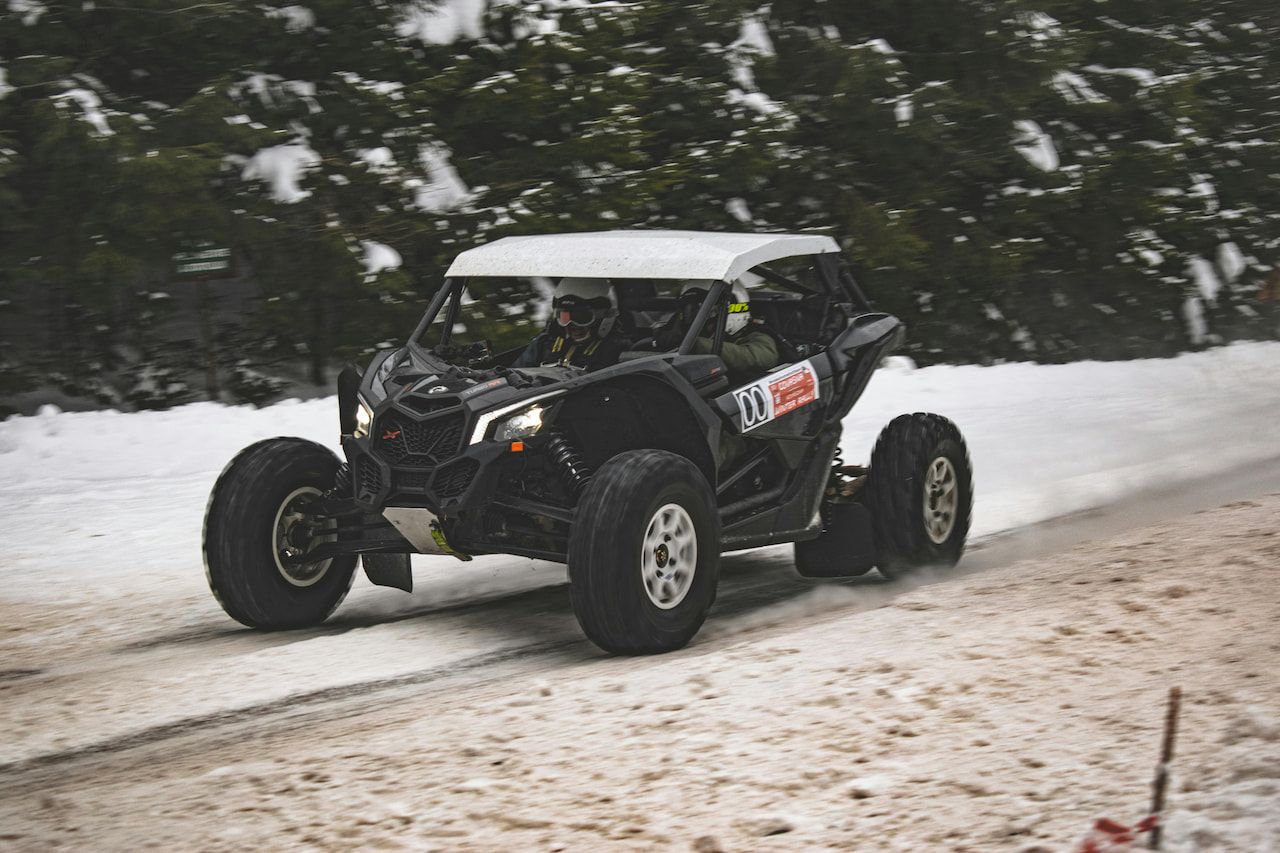Winter can be one of the most thrilling times for UTV owners, but only if they understand how to handle the unique challenges of snow and ice. With the right approach, gear, and techniques, you’ll maximize safety, enjoyment, and confidence when temperatures drop and trails get slippery.

Understanding Snow and Ice UTV Riding: What You Need to Know
Explore essential UTV skills for snow and ice riding by recognizing the conditions that make winter adventures both exciting and demanding. Riding on frozen or snowy surfaces introduces several factors that differ from standard off-road terrain, including traction challenges, lower visibility, and potential mechanical strain.
- Slippery Terrain: Snow and ice drastically reduce tire grip, making it easier to spin out or lose traction on inclines. Anticipating these slippery spots helps you maintain stability and control.
- Reduced Visibility: Winter environments are often accompanied by low light, fog, or blowing snow. Recognizing early signs of diminishing sightlines is key to staying safe and reacting appropriately.
- Cold Weather Strain: Engines and batteries face additional stress in subfreezing temperatures. Ensuring your UTV’s systems are prepared for cold starts and brisk running conditions is crucial.
Key Techniques for Snow and Ice UTV Riding
When it comes to navigating snowy trails and icy routes, having the right strategy sets you up for a safe and enjoyable winter adventure. Equip your ride with the necessary components, and refine your approach for maximum performance.
Find top UTV gear and accessories for winter riding to help you conquer the cold.
- Choose the Right Tires – Studded or specialized winter tires provide enhanced traction. Look for tires designed with deeper treads, ensuring better grip on slippery surfaces.
- Optimize Weight Distribution – Evenly distributing weight across your UTV can improve stability. Consider adding sandbags or cargo in the rear if the front is already weighted by a plow attachment.
- Master Throttle and Braking Control – Smooth, gradual throttle input and cautious braking prevent sudden shifts that cause skidding or fishtailing. Avoid slamming on the brakes; instead, pump them gently to maintain control.
- Monitor Your Speed – High speeds on icy paths increase the chance of sliding. Moderate your speed to allow for safe maneuvering, especially around bends and downhill stretches.
Putting it into Practice: Steps for Snow and Ice UTV Riding
Practice builds confidence and competence. As you apply these winter techniques, remember that each ride can present new challenges. Stay observant and adjust your approach accordingly.
Explore more blog articles on winter riding tips to deepen your knowledge.
- Check Your Vehicle First – Ensure your battery, engine, and tires are in proper condition. Cold weather can reduce battery efficiency and cause mechanical wear, so thorough inspections are critical.
- Plan Your Route – Choose trails that match your skill level, and check local weather conditions and snow depth. This preparation helps avoid unexpected obstacles or dangerous ice patches.
- Practice Gradual Maneuvers – Find a safe area to rehearse starting, stopping, and turning on snow or ice. Gradual, deliberate movements help you gauge traction and build muscle memory for smooth responses.
Best Practices for Snow and Ice UTV Riding
Staying safe on winter trails isn’t just about mastering techniques; prevention is equally vital.
- Keep an emergency kit with blankets, food, and extra tools in case of breakdowns or unexpected weather changes.
- Dress in layers, wear moisture-wicking fabrics, and protect extremities with weatherproof gloves and boots.
- Maintain clear communication with fellow riders. Use radios or mobile devices to stay in contact and share route updates.
Seeking Further Improvement and Expert Guidance
Sometimes, even seasoned riders need assistance. If you notice persistent handling issues, difficulty maintaining traction, or mechanical concerns, it may be time for professional guidance in snow and ice riding.
Keep pushing your limits responsibly. Remember, every winter ride is a chance to gain new skills. Stay curious, practice regularly, and consider seeking advanced coaching if you want to truly excel.
Main Points to Remember
Conquering snow and ice with your UTV demands a blend of preparation, awareness, and the right gear. By selecting proper tires, controlling throttle and brakes, and maintaining a consistent speed, you’ll enjoy safer, more confident rides. Always inspect your vehicle, watch for changing conditions, and continue refining your skills. With a proactive mindset, you can elevate your winter riding experience to new heights.
